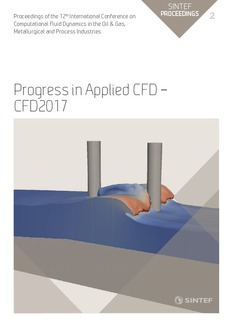| dc.description.abstract | The campaign length of a blast furnace is limited by the hearth inner lining lifetime. In order to maximize the campaign length and ensure a good draining of hot metal and slag, a good understanding of the flow in the hearth is essential. Challenges in modelling the flow involve several continuous phases (hot metal, slag and hot blast) as well as the presence of the deadman, a dense bed of coke particles. The shape and position of the deadman depend on the weight of the burden column above and the buoyancy forces from the liquids in the hearth. A numerical coupled CFD (Computational Fluid Dynamics) – DEM (Discrete Element Method) model was developed and implemented in CFDEMcoupling (Goniva et al., 2012), intended for future flow pattern investigation of the hearth during tapping. A VOF (Volume of Fluid) method is used to model the multiple continuous phases and DEM to model the discrete particles. The VOF and DEM models are coupled together in a 2-way manner, resulting in a complete 4-way coupled CFD-DEM model. We report the experimental validation of the model, performed on a small-scale particle filled tank. The tank was drained of water through the dense particle bed and the mass flow rate was measured. Difficulties in choosing a fine enough mesh for the VOF method to correctly resolve the interface and simultaneously ensure a stable and accurate void fraction calculation arose. Different methods was proposed to enable particle sizes in the same range of the CFD cells, involving alternative methods for mapping the void fraction field onto the CFD mesh, as well as smoothing of the void fraction. With the smoothing model of Radl et al. (2014), the simulation was stable and very good agreements were found with the experimental measurements. | nb_NO |
